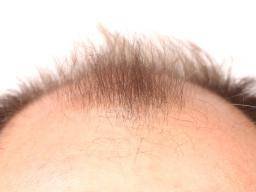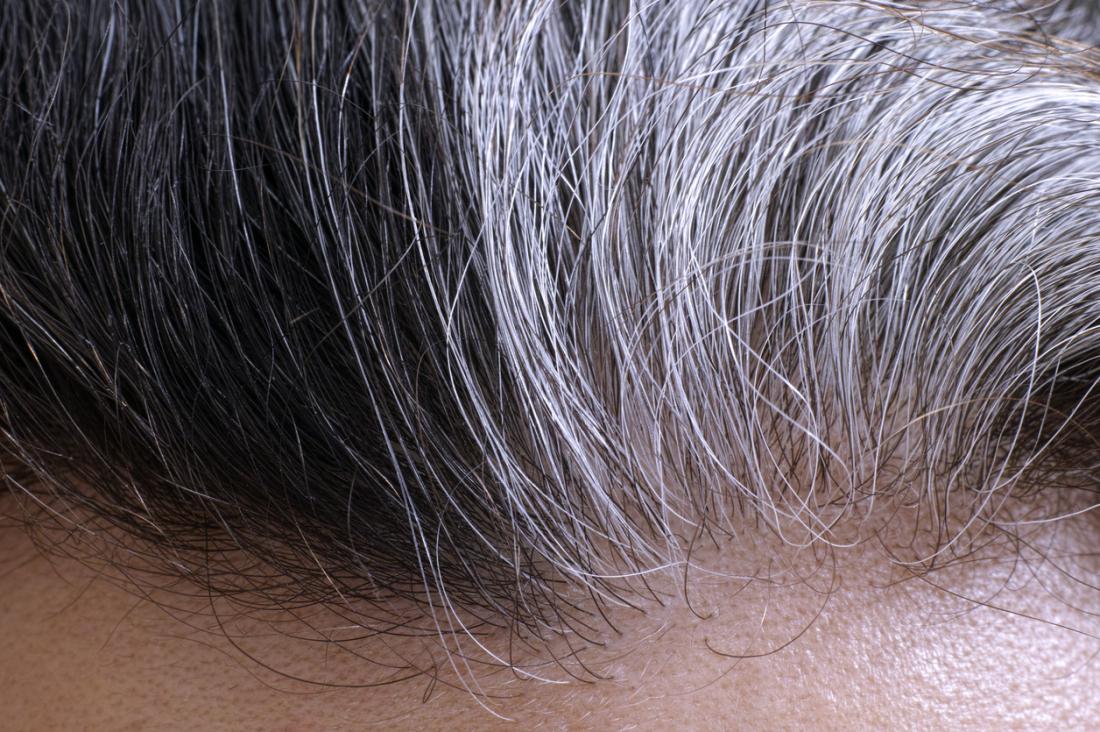Why does hair turn gray?
As you look in the mirror in the morning, you see that inevitable fate has struck: your first gray hair! Whether you are in your 20s or your 50s, gray hair catches up with all of us eventually.
grey hair
When the cells that produce our hair pigments become too damaged, the next hair that grows is gray.
During hair growth, melanocytes make pigment and pass it to hair progenitor cells at the base of the hair follicle. These cells, in turn, transform into the various components of the growing hair.
When our hair grows, pigments are continuously being incorporated, which results in our unique hair color. The cells responsible for this process are the pigment-producing melanocytes at the base of the hair follicle.
In normal hair growth, the follicle produces hair at a rate of around 1 centimeter per month for several years.
But all the cells in our body become increasingly damaged during our lifetime, and these melanocytes are eventually lost. When all the melanocytes are lost in a particular hair follicle, the next hair that grows will be gray or white.
The biology of hair growth is rather complex, with a multitude of specialized cells involved in hair follicle structure and function. Scientists continue to unravel the process of human hair growth and pigmentation.
What controls pigmentation?
Humans have two different types of pigment. Eumelanin is responsible for black and brown colors, while pheomelanin is responsible for orange and yellow.
Genes determine the mixture of pigments that each individual produces, which is why hair color is often similar within families.
The exact mechanisms that control pigmentation are not yet clear. However, recent research points to a finely tuned interplay between several cells in the hair follicle.
Hair progenitor cells are reported to release a protein called stem cell factor, which is a requirement for the production of pigment by melanocytes. In mouse studies, the researchers showed that if this protein is absent, hair color is lost.
Once the hair stops growing, the hair follicle undergoes dramatic structural changes and enters a rest period. During this process, melanocytes naturally die.
However, melanocyte stem cells in the hair follicle normally produce a new set of melanocytes at the start of the next hair growth cycle.
Once the new hair starts to grow, these melanocytes once again ensure that pigmentation is available. But when the melanocytes are damaged or absent, the hair that is produced lacks color and can look gray or white.
Hair growth after damage
Research has shown that human hair follicles that produce gray or white hair have higher levels of cellular damage caused by free radicals. In these follicles, melanocytes and melanocyte stem cells are absent.
In mice, when the DNA of melanocyte stem cells in the hair follicle were damaged, it resulted in permanent cell damage. These stem cells were then unable to reproduce.
Without the pool of stem cells, the next round of hair growth proceeds without melanocytes, resulting in gray hair.
Although it has not yet been possible to fully establish cause and effect during hair graying in humans, the accumulation of damage in melanocyte stem cells over time most likely leads to a loss of this cell population. Each hair follicle will eventually be unable to produce colored hair.
So, while it is inevitable that we will all lose our hair pigment one day, why do some of us go gray in our 20s, while some of us hold on to our colorful locks until our 50s? Research from 2016 showed that individuals with a certain variant of the gene interferon regulatory factor 4 are prone to earlier graying.
As with many of our other traits, we can thank our parents for passing their propensity for graying along to us.



Hi! I am a robot. I just upvoted you! I found similar content that readers might be interested in:
https://www.medicalnewstoday.com/articles/318167.php
Congratulations @jeay! You have completed some achievement on Steemit and have been rewarded with new badge(s) :
Click on any badge to view your own Board of Honor on SteemitBoard.
For more information about SteemitBoard, click here
If you no longer want to receive notifications, reply to this comment with the word
STOPCongratulations @jeay! You have received a personal award!
Click on the badge to view your Board of Honor.
Do not miss the last post from @steemitboard:
Congratulations @jeay! You received a personal award!
You can view your badges on your Steem Board and compare to others on the Steem Ranking
Do not miss the last post from @steemitboard:
Vote for @Steemitboard as a witness to get one more award and increased upvotes!